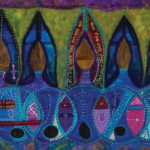Trends in journalism education in Canada: What’s being added?
Just as newsrooms and the media industry are undergoing transformational change these days, so too are journalism programs at universities and colleges across the country. In the first installment of this weekly three-part series, Carleton University associate professor Susan Harada looks at what journalism schools are adding to the curricula.
Photo courtesy of Wikimedia Commons
Just as newsrooms and the media industry are undergoing transformational change these days, so too are journalism programs at universities and colleges across the country. This year, three journalism faculty set out to identify the changes happening on campuses as journalism educators rethink their courses and programs to prepare students for today’s newsrooms as well as the new types of careers that are evolving out of the upheaval in the media industry. In the first installment of this weekly three-part series, Carleton University associate professor Susan Harada looks at what journalism schools are adding to the curricula to prepare students for an industry that is rapidly changing.
By Susan Harada
Most journalism programs have adopted the pedagogical equivalent of the political world’s constant campaign mode these days, because as the Knight Foundation’s Eric Newton pointed out, it’s the “era of continuous change.”
In the U.S., they’re throwing it all at the wall: innovation labs, entrepreneurial journalism, social journalism, glass journalism, drone journalism.
Canadian programs aren’t that far behind.
Related content on J-Source:
- Opinion: Why a revamped uOttawa journalism program isn’t good enough
- Education Matters: Should j-schools teach advocacy journalism?
- Francine Pelletier wins Michener-Deacon fellowship for journalism education
From working with drones in a photojournalism course at the College of the North Atlantic in Newfoundland and Labrador to the multimedia storytelling elective that brought together students from Carleton University’s journalism program and School of Information Technology, innovation is the driving force.
Every one of our survey respondents (the directors, chairs and department heads at journalism programs at universities and colleges) reported revamped curricular offerings in the past five years and characterized the majority of the revisions as major.
Click here for the methodology
This graph shows where the biggest changes were introduced.

For a snapshot of how broadly new skills were introduced in the past five years, we asked respondents to choose from a list of 13 elements.
They ranged from digital photography to advanced coding to professional partnerships, such as curricular pairings among journalism schools and news organizations.
We found that coding skills were ranked lowest on the priority list (at 38 per cent for advanced coding) while every program now incorporates blogging.

To gain insight into what this all means when it comes to how we’re educating our students, we posed the following open-ended question:
Identify the most important thing your students are equipped to do that they weren’t able to do five years ago as a result of curricular changes.
From the responses it’s clear that it’s no longer print,, broadcast and online. It’s journalism in a wider sense of the word that encompasses all of these things and more.
Silos are coming down. Writing for different platforms is being emphasized. Multimedia tools are being introduced earlier in many programs. Video and audio have, in many cases, overtaken TV and radio, so there’s an emphasis on storytelling—through words, visuals, sound, graphs and charts—as never before.
Our next open-ended question tried to zero in on what’s been emphasized:
Identify the most important addition to your curriculum over the past five years.
Overwhelmingly, our respondents told us that digital skills and evolving ethics attached to new journalistic approaches and tools were at the top of the list.
Journalism educators understand that students need to be nimble and adaptable. And in the era of continuous change, the ability of a program to deliver core skills—critical thinking and an understanding of technology—is seen as an imperative.
Finally, we explored what’s coming next:
Identify the next big curricular change you plan to make.
In looking to the future, the words that cropped up most often in the open-ended survey answers included digital, mobile, investigative, entrepreneurial and advanced skills, such as coding and design.
What came through in semi-structured interviews with university program heads or their representatives was the understanding that running a program in an unpredictable field within a process-bound system meant that program frameworks had to be imagined in ways that would allow them to move content quickly in and out as necessary.
That’s why many are adding to existing courses rather than going through the kind of wholesale curricular rebuilding that triggers a lengthy academic approval process. Or, they’re doing both at once.
What’s clear from our interviews is the sense that that journalism schools can’t afford to sit back and wait for somebody else to figure out what they should be teaching. Now, more than ever, educators feel it’s crucial for the academy to lead rather than follow the industry.
First we identified 47 journalism programs at colleges and universities in Canada and sent out a survey to try to capture basic information from all of them. Specifically, we drafted survey questions to probe what schools have added to their programs, what they’ve dropped and the set of skills they now want in new faculty hires.
The survey was sent, in each case, to the academic leaders of each of the journalism programs, whether they were directors, chairs or program heads. Of the 16 universities we contacted, 12 responded for a 75 per cent response rate. Of the eight joint or hybrid programs we contacted, two responded for a 25 per cent response rate. And, of the 23 colleges we contacted, 13 responded for a 56 per cent response rate.
We followed up on our survey responses with semi-structured telephone interviews with the directors and chairs of the university programs and the university side of the eight hybrid programs we identified. We spoke to 14 of them.
We hope to follow up with more detailed research and perhaps even an annual survey to continue to track trends in journalism education in Canada. For now, this three-part series outlines the highlights of our preliminary findings.
Susan Harada is the associate director of the School of Journalism and Communication and head of the journalism program at Carleton University in Ottawa.
Related content on J-Source:
- What's wrong with journalism education?
- Education Matters: Should journalism schools take a stand on unpaid internships?
- Media Musings: Don't tell me there aren't jobs in journalism
Tamara Baluja is an award-winning journalist with CBC Vancouver and the 2018 Michener-Deacon fellow for journalism education. She was the associate editor for J-Source from 2013-2014.





